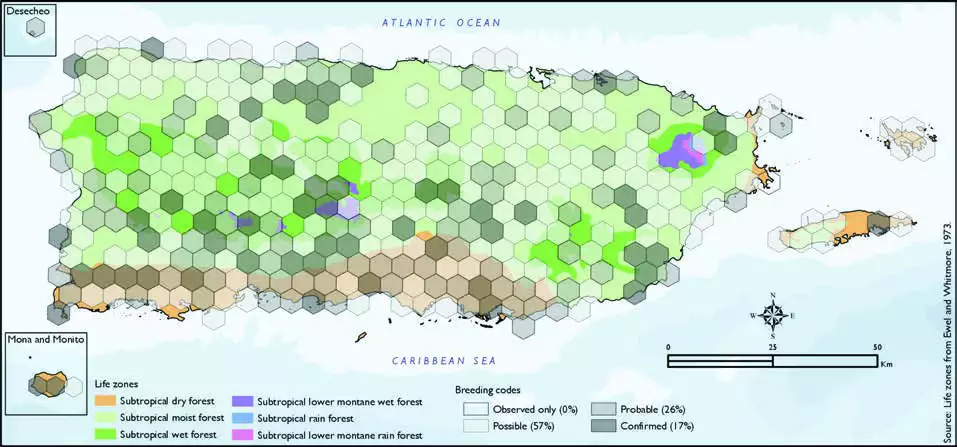American Kestrel
Description
The American kestrel (Falco sparverius), also called the sparrow hawk, is the smallest and most common falcon in North America. It has a roughly two-to-one range in size over subspecies and sex, varying in size from about the weight of a blue jay to a mourning dove. It also ranges to South America and is a well-established species that has evolved into 17 subspecies adapted to different environments and habitats throughout the Americas. It exhibits sexual dimorphism in size (females being moderately larger) and plumage, although both sexes have a rufous back with noticeable barring. Its plumage is colorful and attractive, and juveniles are similar in plumage to adults.
Under traditional classification, the American kestrel is the smallest raptor in America. The American kestrel is sexually dimorphic, although there is some overlap in plumage coloration between the sexes. The bird ranges from 22 to 31 cm (8.7 to 12.2 in) in length with a wingspan of 51–61 cm (20–24 in). The female kestrel is larger than the male, though less so than larger falcons, being typically about 10_ to 15_ larger within a subspecies. The more northern subspecies tend to larger sizes, with a large northern female being about twice the size of a small southern male. The male typically weighs 80–143 g (2.8–5.0 oz), and the female 86–165 g (3.0–5.8 oz). In standard measurements, the wing bone is 16–21 cm (6.3–8.3 in) long, the tail is 11–15 cm (4.3–5.9 in) and the tarsus is 3.2–4 cm (1.3–1.6 in).
Distribution & Habitat
The American Kestrel occurs throughout the Western
Hemisphere including the West
Indies, where it is generally
a common resident in The
Bahamas, Greater Antilles, Virgin
Islands, and the Lesser Antilles
(Raffaele and others 1998). It is
a common nesting species in
Puerto Rico (Oberle 2018) and
a common resident on Vieques
(Gemmill 2015). It also occurs in
Mona and Culebra (Biaggi 1997,
Ventosa-Febles and others 2005).
This species occurs throughout
Puerto Rico but is observed most
commonly in the dry regions of
the southern side of the island (Biaggi 1997) and inhabits farms,
pastures, open country (Oberle
2018), forest edges, and urban
areas like towns and even cities
(Raffaele and others 1998). The
atlas fieldwork yielded a total of
537 records within 327 hexagons
or 68 percent of the 479 total
hexagons (see map). Of the
327 hexagons where this species
was found, breeding met the
atlas definition of confirmed in
17 percent (56) of the hexagons,
probable in 26 percent (84), and
possible in 57 percent (186),
while the species was observed
in an additional hexagon
(<1 percent) but without
evidence of breeding (see map). American Kestrel distribution. The map shows the highest breeding code by hexagon and overlaying the ecological life zones in
Puerto Rico. Note: percentages may not total 100 due to rounding. 183American Kestrel/Falcón Común

Breeding Habits
The American Kestrel is a secondary cavity nestera
species that does not make its
own cavities but uses the cavities
excavated by other species (i.e.,
woodpecker cavities in trees)
or natural cavities in cliff faces
(Raffaele and others 1998).
Therefore, the species and its
distribution may be limited by
absence of suitable cavities for
nesting. Atlas results indicate
that the breeding season for
this species extends throughout
the year, but breeding is most
active from March to June, with
a peak in June (see chart). This seasonal pattern of breeding
appears to coincide in each of
the ecological life zones with no
evidence to suggest that breeding
times differ among the life
zones. Atlas results show that the
American Kestrel mostly breeds
within the subtropical moist
forest life zone (58 percent of
the hexagons), followed by the
subtropical dry forest life zone
(23 percent of the hexagons) and
the subtropical wet and lower
montane wet forest life zones
(19 percent of the hexagons),
and rarely breeding in the
subtropical rain forest life zone
(see table and map).
Conservation
The American Kestrel is listed as a species of least concern by
the IUCN (BirdLife International
2016). Locally, this species is not
listed in any of the threatened
categories of PRDNER and
USFWS. In Puerto Rico, the
American Kestrel has a protected
habitat in land of 11.5 percent or
902 km2 of the total area covered by the hexagons where evidence
of breeding was found for this
species (7799 km2).
Related Species
Family:
falcon